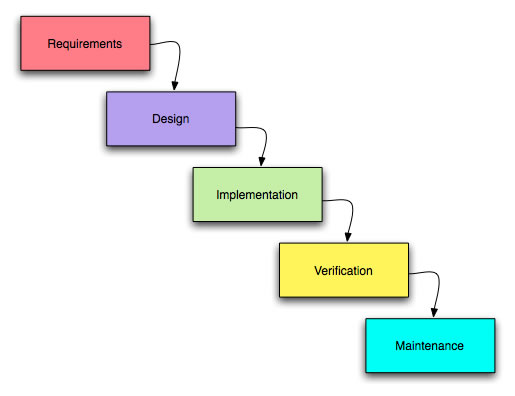Five Stages of a Software Development Life Cycle
There are many approaches that are implemented during the process that involves software development. These approaches and methods are also known as ‘Software Development Process Models’ and include examples such as the Waterfall Model, V-Model, Incremental Model, and Iterative Model. These approaches or models consist of a specific life cycle that they follow in order to determine the level of success in the software development process.
 |
Software Development Life (SDLC) Cycle explains the various stages of a software cycle and the structure in which these stages are carried out. The result produced from each stage is implemented in the next stage of the software life cycle. Requirements are converted into design and the design is used to develop the code. The final testing stage authenticates the results of the implementation stage by measuring it across the requirements.
There are mainly five stages in the SDLC:
Requirement Analysis
The requirements of the software are determined at this stage. Discussions are held between the various stake holders, managers, and users to find out what the particular software will be used for. Who will use it and how will they be using it. Information regarding what kind of input is required and what output is expected is collected during this stage. Once the information is collected, it is analysed to see if the requirements can be incorporated into the software that is to be developed. After which, a ‘Requirement Specification’ document is developed to be used as a guide for the next stage.
Design
Here, the software and system design is developed according to the instructions provided in the ‘Requirement Specification’ document. The design stage establishes what hardware and what system requirements are needed as well as the entire system architecture. The results from this stage are used as input for the next one.
Implementation & Coding
In this stage, the actual coding is done and the code is produced based on the design specifications. This is the most critical and also the longest stage in the SDLC.
Testing
After the development of the code, it is tested to see if it meets all the requirements that were determined in the first stage. Various kinds of testing such as system testing, unit testing, acceptance testing, and integration testing are carried out.
Maintenance
This is the final stage, where the finished software is delivered to the customer. The real problems are identified once the customer begins use. These problems are addressed from time to time as they crop up.
Thank you for the insightful overview of the Software Development Life Cycle (SDLC) and its key stages! At FYI Solutions, we embrace these principles to deliver tailored software solutions. From requirement analysis to maintenance, understanding each phase ensures we meet our clients' needs efficiently and effectively.
ReplyDeleteExcellent post! Nord Tech Innovations is clearly ahead in delivering innovative tech solutions.
ReplyDeleteNord Tech Innovations is truly at the forefront of digital transformation, seamlessly integrating software development, cloud solutions, and IoT to create cutting-edge and secure systems.
The strong emphasis on cybersecurity and data analytics highlights a deep understanding of the current tech landscape, ensuring reliability and safety in every solution.
I’m excited to see how these innovations will continue to drive industries forward. Keep up the fantastic work!
Great post! I really enjoyed your insights on cloud infrastructure and its impact on digital transformation.
ReplyDeleteIt’s refreshing to see such a nuanced perspective, especially in a field that’s constantly evolving.
I particularly appreciated your point about the importance of cybersecurity in this context—it’s something that often gets overlooked amid discussions of innovation and efficiency.
Thanks for sharing your thoughts; I can’t wait to read more from you at Pave Way Tech! Your expertise in consulting and cybersecurity solutions is truly valuable.